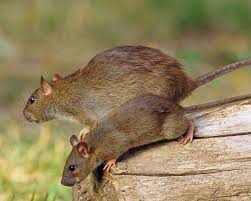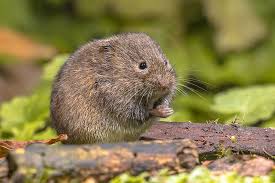Unexpected Encounters: Surprising Species That Reveal the Hidden Depths of Our Local Parks
- Zainab Chehime

- Aug 15
- 4 min read
Updated: Sep 2
My time with Keep Coyote Creek Beautiful has given me a unique window into the diverse and dynamic ecosystems of Almaden Quicksilver Country Park, Hellyer County Park, and Alum Rock Park. These parks may seem familiar at first glance—with their inviting trails and scenic views—but they harbor a fascinating array of species, many of which play crucial roles in maintaining ecological balance. Discovering these surprising creatures has deepened my understanding of how interconnected and resilient nature truly is.
At Almaden Quicksilver County Park, I discovered how the oak woodlands support a variety of wildlife, including Blue Oaks (Quercus Douglasii) and California Bay Laurels (Umbellularia californica), which provide shaded refuge and food for many creatures.
Blue Oak California Bay Laurel

While surveying along the hillside trails, I encountered a Western Fence Lizard (Sceloporus Occidentalis) basking on a sun-warmed rock. These small lizards are essential indicators of dry, healthy habitats and play a vital role in controlling insect populations. Their confident presence reminded me of the importance of intact vegetation and ground cover in sustaining reptile communities.
Traveling east to Alum Rock Park, I found myself drawn to the vibrant creekside habitats and the remarkable animals that call them home. One especially memorable moment was spotting a Gopher Snake (Pituophis catenifer), a non-venomous species often mistaken for rattlesnakes due to its similar coloring and behavior. I watched it silently wind through the grass near a trail, possibly hunting for California Ground Squirrels (Otospermophilus beecheyi) or Pocket Gophers (Geomyidae)—both common in the park and known for burrowing extensively. Pocket gophers, in particular, can cause significant soil disturbance, uprooting native plants and exposing roots to erosion. Gopher snakes are vital in keeping rodent numbers in check, which in turn helps protect native plant life and reduces the spread of diseases. Seeing the snake in action challenged my own initial nervousness, reminding me that these misunderstood animals are not threats, but key contributors to ecological balance.
Great video highlighting the behavior and unique traits of the gopher snake
At Hellyer County Park I got a glimpse into the more secretive, nocturnal life of the area's wildlife. Scattered beneath the oak trees, I noticed several pale, tapered feathers—clues that pointed to the silent presence of Barn Owls (Tyto Alba) and Great Horned Owls (Bubo Virginianus). Thanks to iNaturalist I was able to tentatively identify a few based on color, shape, and softness—barn owl feathers tend to be more buff-colored with a soft, velvety texture, while great horned owl feathers are broader and darker.
Barn Owl Great Horned Owls
These owls are skilled nighttime hunters, feeding on native species like Woodrats (Neotoma Cinerea), Voles (Microtus arvalis), and occasionally large insects like Jerusalem Crickets (Stenopelmatus Fuscus), or Darkling Beetles (Family Tenebrionidae). Woodrats are especially common in the area, often building elaborate stick nests at the base of shrubs or trees. Because they are rarely seen during the day, I've learned to look for subtle signs like feathers or owl pellets to trace their activity and better understand their role in this ecosystem.
Woodrats Voles Jerusalem Crickets Darkling Beetles
On my own individual learning time after the BioBlitz, I was pointed toward the iNaturalist project Found Feathers, (https://www.inaturalist.org/projects/found-feathers) which changed how I viewed what I found—so I’m passing it along to you. You can check it out yourself to help identify feathers and discover even more about these secretive birds. It showed me how much more there is to notice when you look closely. It turned into this fun little rabbit hole where I could match what I saw in the field with other naturalists’ finds—it really opened my eyes to just how much you can learn from something as simple as a feather.
Another top predator adapting remarkably well to urban and semi-urban landscapes is the Coyote (Canis latrans). While I haven't observed one directly, their tracks and scat appear frequently across these parks. Coyotes are opportunistic hunters and scavengers, helping regulate powerful populations of smaller mammals and preventing overgrazing of vegetation. Their existence is a remarkable example of wildlife adapting to human-altered environments, but it also highlights the need for coexistence strategies to protect both people and wildlife.
One of the more eye-opening moments at Hellyer County Park was spotting a Red-Eared Slider


(Trachemys Scripta Elegans) basking on a log near Cottonwood Lake. These turtles are easy to recognize by the red stripe behind their eyes and are commonly seen in urban waterways — but they aren’t native to California. In fact, they’re considered invasive and were originally introduced through the release of pet turtles. While they’re fascinating to observe, their presence is a reminder of how human activity—sometimes even well-intentioned—can disrupt local ecosystems. They compete with native Western Pond Turtles (Actinemys Marmorata) for resources, making conservation of riparian habitats and public education even more important.
These unexpected encounters reveal the complexity and interconnectedness of our local parks. They demonstrate that even familiar landscapes are home to hidden stories and vital ecological processes. For visitors and nature enthusiasts, learning about these pieces encourages a deeper appreciation and a sense of responsibility for protecting the habitats that support them.
With time, I’ve learned that observing wildlife is not just about spotting animals; it’s about understanding their roles and interactions within ecosystems. By valuing these surprising species and the balance they help maintain, we can better support conservation efforts and foster healthier, more resilient parks for future generations.






















Comments